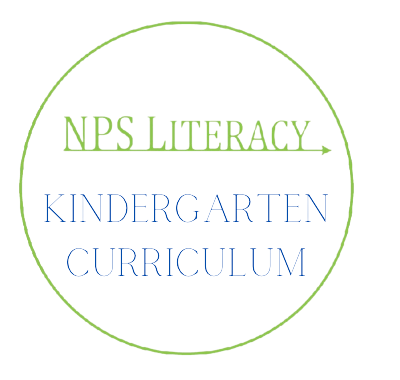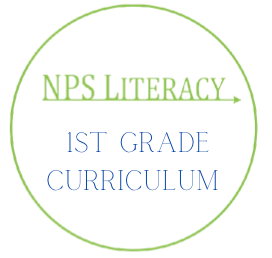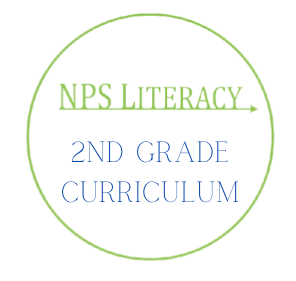- Norfolk Public Schools
- Grades K-2
- Curriculum
Literacy Plan
Page Navigation
- Home
- Literacy Plan Action Steps
- Preschool
- Grades K-2
- Grades 3-5
- Grades 6 - 8
- Grades 9 - 12
- Literacy Across Content Areas
- Learning Support - Special Education Services
- English Learners
- Resources for Families
- Norfolk: A Community of Readers and Writers
- READ 14.2 Initiative
- Professional Development
- Virginia Literacy Act: Overview & Updates
- Virginia Literacy Act: Required Division Documents
- Glossary of Literacy Terms
K-2 Curriculum
-
Norfolk Public Schools' (NPS) K-2 English and Language Arts curriculum is built upon the Virginia 2024 English Standards of Learning, which are grounded in the research-based approach to teaching reading, commonly called the Science of Reading. This curriculum emphasizes a sounds-first, systematic approach to early reading instruction. Students receive explicit and systematic instruction in all foundational literacy areas, including phonological and phonemic awareness, phonics, fluency, vocabulary, comprehension, and writing. Through a variety of fiction and nonfiction texts, students practice and apply these skills, ensuring they develop a strong literacy foundation that supports future learning.

Virginia English Standards of Learning
High Quality Instructional Materials (HQIM)
Our K-5 classrooms use Benchmark Advance, a High-Quality Instructional Material (HQIM) that ensures all students engage with rich, challenging content from kindergarten through fifth grade. This curriculum builds essential literacy skills, starting with strong phonics instruction in the early grades and advancing to complex reading and comprehension in later grades. Benchmark Advance is aligned with the Virginia Literacy Act, which requires all schools to use VDOE-approved, research-based materials by the 2024-25 school year. By following Benchmark Advance’s carefully designed sequence, we provide a consistent, rigorous, and effective learning experience for every student.
Benchmark Advance Vertical Progression of Knowledge-Building
Unit Topics and Essential Questions

Kindergarten English Standards of Learning
Understanding the Kindergarten English Standards of LearningKindergarten Literacy
At the kindergarten level, students will:
- experience a text and language rich environment
- develop communication skills, phonological and phonemic awareness, print awareness, vocabulary, comprehension, and an appreciation for reading and writing
- develop an awareness of reading materials as sources of information and enjoyment
- expand their listening and speaking vocabularies
- listen to texts read aloud
- participate in conversations
- learn to collaborate effectively with others
- recognize and print letters of the alphabet
- apply basic phonetic principles to read and write
- identify story elements
- communicate ideas through pictures and writing
- ask questions and collaborate in shared research activities

First Grade English Standards of Learning
Understanding the First Grade English Standards of LearningFirst Grade Literacy
At the first grade level, students will:
- develop phonological and phonemic awareness, print awareness, phonics, fluency, language usage, and handwriting
- learn and apply more complex phonics patterns when reading and writing
- increase automaticity in reading words and connected text
- gain fluency when reading and rereading both phonetically controlled and uncontrolled texts
- build world and word knowledge
- be immersed in a text and language rich environment
- develop communication skills, vocabulary, comprehension, and an appreciation for reading and writing
- apply comprehension strategies when reading and listening to literary and informational texts
- collaborate in classroom discussions about texts
- write in a variety of forms for specific purposes

Second Grade English Standards of Learning
Understanding the Second Grade English Standards of LearningSecond Grade Literacy
At the second-grade level, students will:
- apply more complex phonics patterns and common affixes when reading and writing
- read and reread grade level texts with prosody, accuracy, and appropriate rate
- build world and word knowledge by being immersed in an environment filled
with literary and informational texts - deepen their understanding of genre types with a focus on fairy tales across cultures
- expand vocabulary by speaking and listening effectively in classroom discussions
- continue to expand their comprehension of texts by participating in collaborative discussions and writing about their reading
- begin to make the transition to cursive handwriting
- understand writing as a process
- write in a variety of forms and for a variety of purposes, including across content areas
- focus on foundational language usage skills, including grammar and mechanics
- research using available resources to complete a research product

